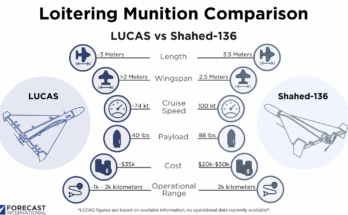
Airborne self-protection equipment is always important. When that equipment is in service of uniquely vulnerable platforms, its importance increases significantly. One system in particular, the ALQ-213, is being produced for some major airborne applications – not the least of which is the U.S. Navy’s submarine-hunting aircraft, the P-8A Poseidon.
The ALQ-213 integrates the control of all EW self-protection subsystems into one coordinated suite and interfaces the EW suite with the aircraft core avionics system, integrating and controlling a wide variety of equipment, including missile warning systems, jammers, and countermeasures dispensers. In an operational environment that frequently places the P-8A in extremely close range of threats, the ability to respond as quickly as possible is critical.
With the submarine threat growing in recent years, the need for the ASW aircraft is becoming more pressing. The United States is the largest user of the Poseidon, with a requirement for 117 P-8As. Australia and India have selected the aircraft to meet their own maritime patrol requirements, with orders for 14 and eight aircraft, respectively.
Additional worldwide production of Poseidon will add significantly to demand for the ALQ-213 in the next several years. In July 2018, New Zealand announced plans to order four P-8As through the Foreign Military Sales program. The procurement of these aircraft was included in the Pentagon’s FY20 budget. Deliveries are to begin in 2023.
Tactical fighter programs have also added to the success of the ALQ-213. In January 2017, an upgrade of the Taiwan Air Force’s fleet of F-16 multirole fighter jets was begun, with an initial batch of four aircraft. The retrofit effort would bring the legacy Taiwanese fleet of 144 F-16A and B variants up to a single enhanced “V” variant. Under the upgrade program, each of Taiwan’s aircraft would be equipped with the ALQ-213.
In April 2018, the U.S. State Department cleared a Slovak government request for the sale of 14 F-16 Block 70/72(V) configuration combat aircraft. The $2.9 billion package includes the ALQ-213, among other technology.
Andrew Dardine is lead analyst for Forecast International's Defense Electronic Systems group. He is the primary author of Forecast International's Electronic Warfare Forecast and co-author of Electro-Optical Systems Forecast and C4I Forecast. Andrew is also a regular contributor to FI's Defense & Security Monitor blog, offering insights into developing technologies such as directed-energy and next-generation jamming systems. His analysis of such vital market areas as EO/IR systems and electronic countermeasures technology has been cited in Defense News, Aerospace Daily, and Bloomberg Businessweek, among other news media. He has also written about the electronic defense market for Aviation Week and the Journal of Electronic Defense.





